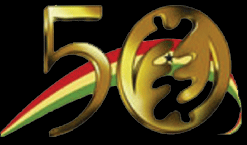The British Pound proudly carries the head of its Queen, Elizabeth II, on every note and coin; the US Dollar denominations boast George Washington, the country's first president, with other founding fathers and 'dead presidents".
And from July this year, Ghana’s Big Six will be celebrated in the same nation-founding fashion, with Kwame Nkrumah, J B Danquah, Edward Akufo Addo, Emmanuel O Obetsebi- Lamptey, Ako Adjei and William Ofori Atta gracing every denomination note of the new Ghana cedi, which was launched in Accra
Like the Queen and like George Washington, the founding members of the United Gold Coast Convention, established in 1947 as a progressive nationalist movement, which set the ball rolling for political independence 10 years later, have long been recognised as the fundamental building blocks on which this nation was built.
Now, their faces will be preserved for posterity; or at least as long as the sturdier, more secure and more manageable currency lasts, when it is finally introduced in July.
Specimens of the re-denominated currency were presented by the Governor of the Bank of Ghana, Paul Acquah, during a ceremony at the bank’s headquarters yesterday.
The launch also marked the beginning of an education campaign on the new currency known as "Know Your Notes, Coins and Security Features." The education campaign will be carried out through visual presentations on television, mass media exposure and direct community contact, in order to allow for easy identification of the new notes and coins.
The Ghana cedi notes are in denominations of 50, 20, 10, five and one, while the coins are in one cedi, and one, five, 10, 20 and 50 pesewas. Confusingly, the 1 Ghana cedi comes in both note and coin form.
The value of the new currency is the same as that currently in circulation; ¢10,000 of old money will buy the same amount of goods as one new Ghana cedi.
The re-denomination starts in July this year but the old and new notes and coins will both be legal tender until December, when the old money will be phased out. The banks will, however, continue to exchange the old money for the new one after the cut-off date.
"The introduction of the Ghana cedi notes and coins and the Ghana pesewa coins is a monetary measure to underpin the regime of stability observed for some time now," Dr Acquah observed.
He said BOG has issued guidelines on the pricing of goods and services, exchange quotations, banking transactions and accounting systems to facilitate the smooth roll out of the re-denomination exercise.
According to Dr Acquah, the design of the notes involved the selection of dominant colours for each note and some national monuments and concepts for their front and back. "They all incorporate very robust security features to allow for easy and safe recognition and transactions," he said.
The front of all the notes has a re-composed oval portrait of the Big Six embossed on their right side. Their left side has a five-pointed star and an image of the Independence Arch, a symbol of Ghana’s political freedom.
The highest denomination, GH¢50, is predominantly brown and its back features the Osu Castle, the seat of Government. The GH¢20 is indigo-coloured and depicts the Supreme Court building - representing rule of law – at its reverse. The back of the GH¢10 is a shade of green and shows a picture of the BOG headquarters. The GH¢5 is blue, with the University of Ghana embossed on its reverse; while red dominates the lowest note, GH¢1, which has a depiction of the Akosombo hydro-electric dam at its back.
Ghana’s coat of arms is depicted on the back of all the new coins. The obverse of the GH ¢1 coin has the image of the scale of justice whilst the 50Gp has the picture of a market woman. The 20Gp depicts a cocoa pod, and the 10Gp has a book on its back. Whereas the 5Gp has a man blowing a horn, the 1Gp has the image of the Adomi Bridge.
"In addition to these images, user requirements including fitting the wallet, ease of banknote automation and features for the visually impaired were incorporated in the design [of the coins]," the BOG Governor explained.
"The notes have strong safeguards with regards to security and durability. On durability, enhancements have been introduced to extend the lifespan of the notes. Similarly, the coins were minted from metals and nickels, which are environmentally friendly," Dr Acquah noted.
For security and durability, a watermark image of Tetteh Quarshie, the man credited with bringing productive strains of cocoa to Ghana, and a cocoa pod, appear in subtle areas of light and shades when held up to light as an integral part of each note.
There are see-through features which permit the denomination of each note to be seen clearly when held up to light. A latent image which is not obvious to the observer when viewed normally, but visible when held at a 45 degree angle, shows denominations of the notes.
Another security feature is a security thread, which, when viewed in reflective light, depicts bars that can change colour from red to green when the GH¢20 and GH¢50 are tilted, or shiny silver bars when the GH¢1, 5 and 10 are tilted. Also, a solid line appears containing the text "Ghana" and the denomination when a note is held up to light.
Each denomination is printed in intaglio gold, which combines the unique characteristics and the benefits of intaglio printing with metallic golden coloured ink.
The notes also have an iridescent band that has a colour-shifting property which makes the colour appear shiny from one angle and matt from another angle. There is a hologram in the GH¢10, 20 and 50 which incorporates numerous smaller images in two distinct sets: "BG" (for Bank of Ghana) and the respective denomination.
Link to The Statesman : News : New Ghana Cedi Values Big Six




No comments:
Post a Comment